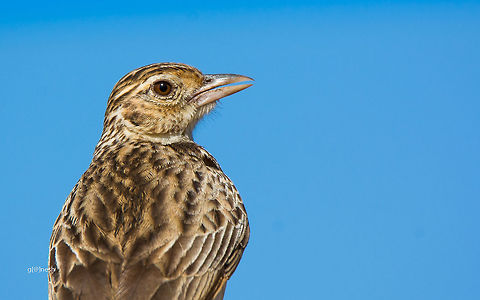
Appearance
It is pale and is mostly found in arid areas. It has a cheek patch completely bounded by a white supercilium and post-auricular border. The crown and upperparts are heavily streaked. The pale underparts have large spots on the breast. It is distinguished from Jerdon's bush lark by its longer tail, shorter bill and legs. Most of its wing coverts, tertials and central tail feathers have pale centres. The primary coverts look all brown.It sings from bush tops but does not usually perch on trees or wires. The calls are similar to that of Jerdon's bush lark but are lower and have longer rattling tremolos often falling in pitch.
The song-flight during the mating season is an amazing spectacle. The bird flutters high over the ground, then holds its wings in an open V and "parachutes" down to its perch uttering its song consisting of short tweets and cheeps in three syllables followed by a longer fourth syllable. This combination is repeated till the bird perches again.
The rufous wing bars are diagnostic but care must be taken not to confuse the bird with ''M. affinis'' in the central Western Ghats and country around where their ranges overlap. ''Mirafra affinis'' is darker with more rufous on the wings.
References:
Some text fragments are auto parsed from Wikipedia.